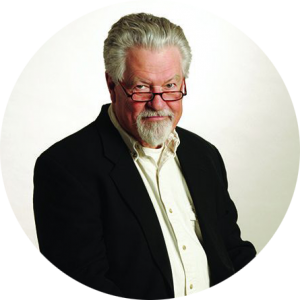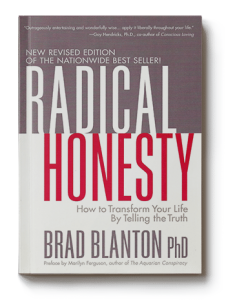
A guide offers a new, comprehensive evaluation of the concept and practice of consent.
In this sweeping reappraisal of the whole world of giving and receiving, of touching and being touched, Martin attempts to undercut and offset readers’ long-standing assumptions by posing a disarmingly simple question they should ask others: “How do you want me to touch you?” In the author’s extensive experience interviewing people as a sex educator, she often finds that this question causes confusion. “The most common thing that happened when people made this offer was that they forgot they could set limits or say no,” she writes. “They sometimes assumed that they had to do whatever their partner asked of them.” Martin draws her readers’ attention to their own poor training by society in this very question of regulating and experiencing touch and contact. She points to the fact that people are trained early in childhood to suppress their ownership of their physical actions: clean your plate (even if you’re not hungry); let grandma kiss you (even if you don’t want her to). She contends that most people extend this deficient training into their adult life: “Not only do we go along with something, we often try to make ourselves like it more.” To break this momentum, she proposes not only the simple question “How do you want me to touch you?” but also its follow-up: “How do you want to touch me?” These principles are further elaborated throughout the book.
Martin, who founded the School of Consent in 2018, repeatedly makes it clear that the clarifying concepts she’s outlining will at first seem peculiar to her readers. They will challenge them, she asserts: “Long-held assumptions will crack open, and there will be insights that shake you up.” She elaborates on the four “quadrants” of giving and receiving touch—“the Serving Quadrant,” “the Taking,” “the Accepting,” and “the Allowing”—and their permutations (are you touching someone for your pleasure or theirs? Are you allowing yourself to be touched for your pleasure or theirs?). And she continuously reassures her readers that this fundamental realignment of old reflexes will be challenging: “It tends to feel odd, sometimes foreign, occasionally impossible, but when it clicks, there is often a feeling of relief and of recovering something you had lost.” She compensates for this strangeness with, among other things, a marvelously open and welcoming prose style, clearly breaking down her concepts in order to help her readers construct a new idea of what touching is—and, by extension, sex and all issues of consent. She stresses that the instructions she’s explaining are in fact extremely simple—the hardest part for many of her clients is merely taking them seriously enough to practice them. Admittedly, many readers will need this encouragement; despite the clarity of the author’s prose, her explanations can often feel jarringly alien. Surely, some readers will think, there are aspects of interpersonal touching that are basically instinctual; surely, it can seem oddly artificial to dissect every aspect of touching so analytically. The implicit response of Martin’s valuable book, written with Dalzen, is simple: Readers can—and must—do more than just follow their instincts.
A smartly written and revelatory reexamination of readers’ most intimate experiences.
- Kirkus Reviews
https://www.kirkusreviews.com/book-reviews/betty-martin/the-art-of-receiving-and-giving/
 Dear Reader, Wow!
Dear Reader, Wow! You are in for a treat! This book is about contact between humans being, including, but not limited to sexual contact. Betty Martin is introducing the dilemmas of contact for people with minds and bodies already trying to tell the difference between mindfuckland and reality, and what happens when there are two or more of them at the same time!
You are in for a treat! This book is about contact between humans being, including, but not limited to sexual contact. Betty Martin is introducing the dilemmas of contact for people with minds and bodies already trying to tell the difference between mindfuckland and reality, and what happens when there are two or more of them at the same time!
This is one of the most profound dilemmas of current humans—that we all want and need contact, and we all want and need withdrawal—but hardly ever at the same time or to the same degree! And we very seldom know clearly what either one of us want, and even then we seldom risk saying so! No wonder our closest sense of intimacy sometimes is that we are all going crazy together! Our best friends are at least a part of our looney toons alliance!
Take this one fine example of articulating the dilemma of desire and willingness from her introduction to the book…
“Want-to and Willing-to. There is a difference between what you want to do (or have done to you) and what you are
willing to do (or have done to you).
Want-to. You want it for your own reasons because it brings you joy, and it may or may not involve anyone else. A walk in the woods, curling up with a good book, or reaching up your lover’s shirt. You choose it because you want it. The question you ask yourself is, What sounds wonderful? What do I prefer? What is my first choice?
Willing-to. You would not otherwise choose it for yourself, but you are willing because someone else wants it, and it is okay with you. Making them a cup of tea or scratching that spot on their back. You choose it because someone else wants it. The question you ask yourself is, Is this okay with me? Is this something I genuinely don’t mind?
Your Willing-to list is longer than your Want-to list. There are a lot of things you might not choose for yourself but you don’t mind for someone else. Both options occur in a range of intensity. Your Want-to can vary from a mild preference to a burning desire. Your Willing-to can vary from delighted to barely willing (“Only for you, baby!”), or you may be willing within certain limits, like for a short period of time.
We need both options fully functional. We need times to notice what we want and put that first and other times to set it aside and go with what someone else wants. Most important, we need to be able to tell the difference.”
Over the years I have talked about this with Fritz Perls, Abe Maslow, Marilyn Ferguson, Albert Ellis, Byron Katie and many many others. And now the voice of Betty Martin takes the conversation further, and in intriguing detail, in this great book!
Brad Blanton, Ph.D. author of Radical Honesty: How to Transform Your Life by Telling the Truth, and other books. www.radicalhonesty.com

